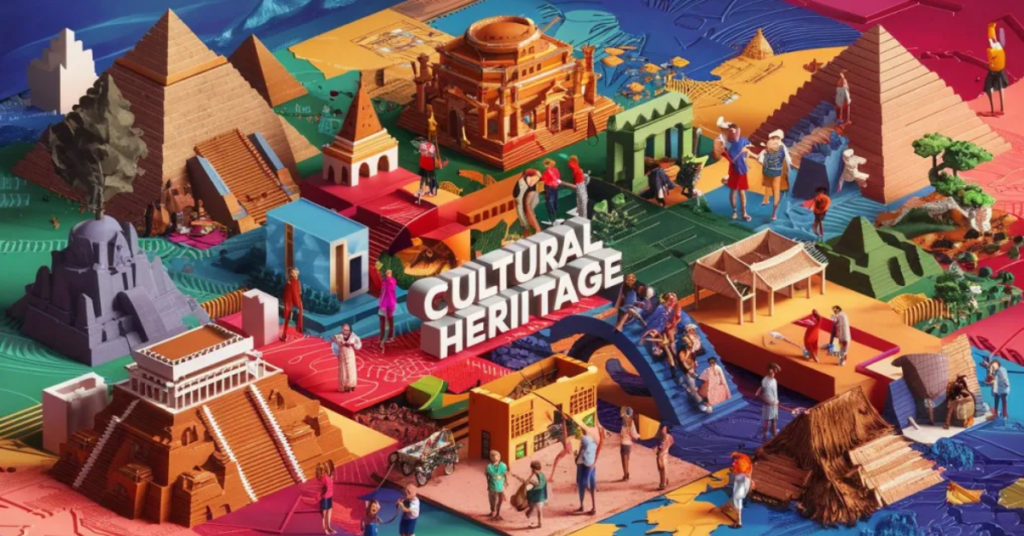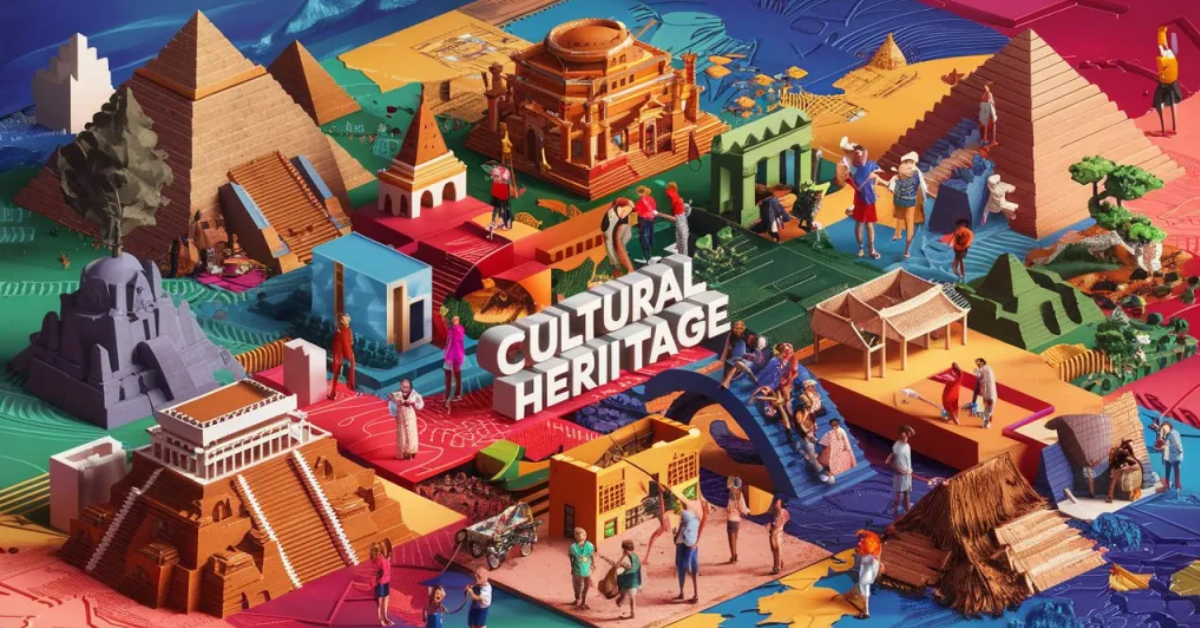University cultural heritage programs are vital in safeguarding, understanding, and celebrating the diverse cultures that shape our global landscape. These programs not only educate students but also engage communities, fostering a richer appreciation of history, art, language, and tradition. This article explores the importance of university cultural heritage programs, their various offerings, and their broader impact on both students and society.

Understanding Cultural Heritage
Cultural heritage encompasses the shared practices, languages, monuments, and artifacts that define a community’s identity. It can be categorized into two primary types: tangible heritage, which includes physical objects like buildings, monuments, and artworks, and intangible heritage, which refers to practices, representations, and expressions such as folklore, traditional music, and rituals. Through cultural heritage programs, universities aim to preserve and promote both types, ensuring that future generations can access and appreciate these legacies.
The Importance of Cultural Heritage
Cultural heritage holds immense significance for several reasons:
- Identity Formation: Heritage plays a crucial role in helping individuals and communities develop their identities, providing a sense of belonging and continuity.
- Historical Understanding: Engaging with cultural heritage allows students to gain insights into historical events and societal changes that have shaped contemporary life.
- Cultural Diversity: Understanding different cultures fosters respect and appreciation for diversity, which is essential in an increasingly interconnected world.
- Economic Development: Cultural heritage can stimulate tourism and support local economies, creating jobs and fostering community initiatives.
- Social Cohesion: Engagement with cultural heritage promotes dialogue and understanding among different groups, helping to strengthen community bonds.
Key Components of University Cultural Heritage Programs
University cultural heritage programs are multifaceted, encompassing a range of disciplines and approaches. Below are some key components commonly found in these programs:
1. Degree Programs
Many universities offer specialized degree programs focused on cultural heritage management, museum studies, archaeology, and anthropology. These academic pathways provide students with the theoretical knowledge and practical skills necessary for careers in heritage conservation, curation, and research.
Example Programs
- Master’s in Cultural Heritage Management: This program emphasizes heritage conservation principles, site management, and policy development.
- Bachelor’s in Archaeology: Students are trained in excavation techniques, artifact analysis, and cultural interpretation.
2. Research Initiatives
Research is a cornerstone of cultural heritage programs. Universities engage in various projects, including archaeological digs, historical documentation, and community outreach initiatives. These research efforts not only contribute to academic scholarship but also aid in the preservation and revitalization of local heritage.
Case Study
At the University of Cambridge, researchers participate in the Digital Archives Project, which aims to digitize and preserve manuscripts from various cultures, thereby making them accessible to a wider audience.
3. Community Engagement
Many cultural heritage programs place a strong emphasis on community involvement. Universities often collaborate with local organizations, museums, and cultural institutions to develop outreach initiatives that educate and engage the public.
Examples of Community Initiatives
- Heritage Festivals: Universities may organize events celebrating local traditions, allowing students to interact with community members and learn about their cultural practices.
- Workshops and Seminars: These events provide platforms for experts and local artisans to share their knowledge with students and the public.
4. Internships and Fieldwork
Hands-on experience is crucial for students in cultural heritage programs. Internships with museums, cultural organizations, and archaeological sites allow students to apply their theoretical knowledge in real-world settings.
Benefits of Fieldwork
- Skill Development: Students gain practical skills in conservation techniques, exhibition design, and archival research.
- Networking Opportunities: Internships can lead to valuable professional connections in the field.
5. Digital Heritage
With the advancement of technology, universities are increasingly incorporating digital tools into their cultural heritage programs. This includes virtual reality, 3D modeling, and online archives.
Innovative Applications
- Virtual Museum Tours: Some programs offer immersive experiences that enable users to explore heritage sites and artifacts from anywhere in the world.
- 3D Scanning: This technology allows for the detailed documentation of artifacts, which can be used for research and educational purposes.
Challenges Facing Cultural Heritage Programs
Despite their vital role in preservation and education, university cultural heritage programs encounter several significant challenges:
1. Funding and Resources
Many cultural heritage initiatives rely heavily on grants and donations, making them vulnerable to economic fluctuations. Limited funding can restrict research opportunities and program development.
2. Balancing Preservation and Accessibility
As institutions strive to preserve cultural heritage, they must also ensure that these resources are accessible to the public. Balancing conservation efforts with public engagement can be challenging.
3. Globalization and Cultural Erosion
The rapid pace of globalization poses a threat to many local cultures and traditions. Universities must find innovative ways to promote and protect cultural heritage amidst homogenization.
4. Ethical Considerations
Issues of ownership and representation often arise in cultural heritage discussions. Universities must navigate these complexities to ensure that heritage is presented respectfully and accurately.
The Future of Cultural Heritage Programs
The future of university cultural heritage programs is promising, particularly as awareness of the importance of cultural preservation continues to grow. Several key trends are shaping the future of these programs:
1. Increased Interdisciplinary Collaboration
Cultural heritage programs are increasingly collaborating with other disciplines, such as environmental science, urban planning, and digital media. This interdisciplinary approach enriches the understanding of heritage and encourages innovative solutions to preservation challenges.
2. Emphasis on Sustainability
There is a growing recognition of the need for sustainable practices in cultural heritage management. Programs are beginning to incorporate principles of sustainability to ensure that conservation efforts do not harm the environment.
3. Global Networks
Universities are forming international partnerships to share knowledge and resources related to cultural heritage. These networks facilitate collaboration and enhance research opportunities.
4. Engagement with Indigenous Communities
Many programs are placing greater emphasis on collaborating with Indigenous communities to ensure their voices and perspectives are included in heritage management discussions. This approach promotes respect for traditional knowledge and practices.
Conclusion
University cultural heritage programs are essential for preserving our collective past while equipping future generations with the skills needed to appreciate and protect cultural diversity. Through a combination of academic study, research, community engagement, and innovative practices, these programs foster a deeper understanding of the complexities surrounding cultural heritage. As challenges evolve, universities will continue to adapt, ensuring they remain at the forefront of preserving the richness of human culture for years to come.
In an increasingly interconnected world, the preservation of cultural heritage enriches lives and strengthens the social fabric, reminding us of the beauty and diversity that make our global community a vibrant and unique place.
